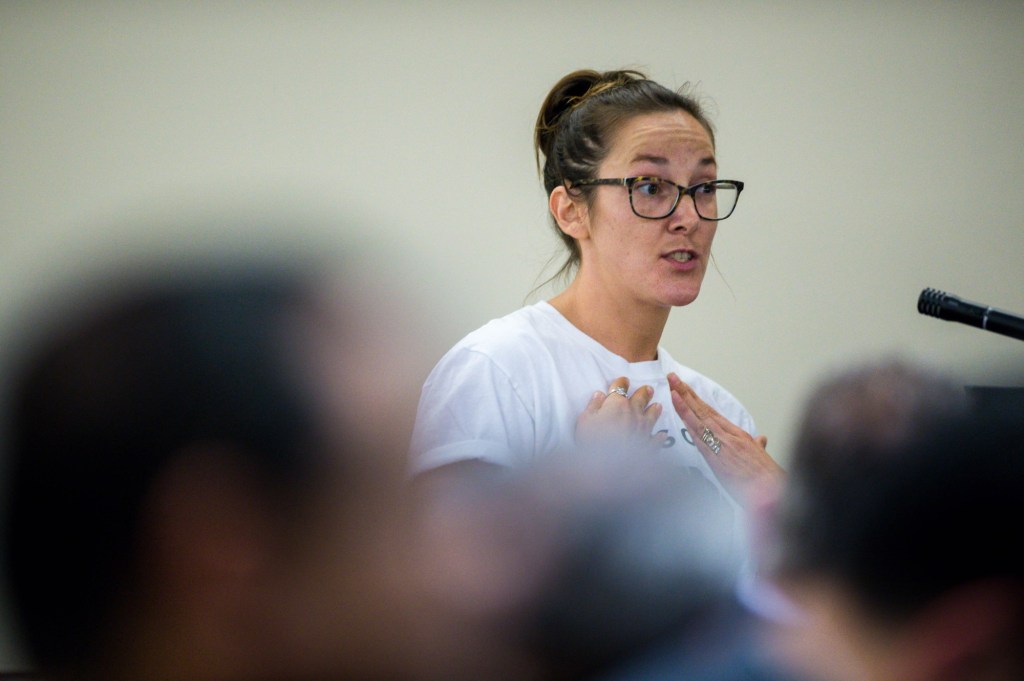
During the past decade, there has been an ongoing and concerted effort by those with a vested interest in protecting the old, failed approaches of our criminal justice system to spread disinformation about the impact reforms to that broken system have had.
That effort has entered into hyperdrive as crime rates have ticked up from historic lows in recent years because of the global pandemic, which powerful law enforcement interests hope will also have the effect of causing collective amnesia, where we all forget the disastrous ruin wrought by the failed “tough on crime” policies of the 1980’s and 1990’s.
The truth is, criminal justice reforms like Proposition 47, approved overwhelmingly by state voters nine years ago, have successfully pulled California back from the brink of an abyss that included multiple people, many of them Black and Latino, needlessly dying every week in its overstuffed state prisons as a result of medical neglect, a statewide re-arrest rate that was over 75 percent and the entire state prison system nearly being taken over by the federal government.
We were failing by every conceivable measure to provide the safety and community well-being every Californian deserves.
Proposition 47 promised there was a better, more effective, more sustainable way of creating the durable safety every California community should expect. That if instead of using all of the tens of billions of dollars we spend every year for public safety on enforcement and incarceration, we invested some of that money back into local communities and into preventing crime and harm from occurring in the first place, we’d get a glimpse of what might be possible if ever we invested in crime prevention to scale.
Voters were clear when they approved Proposition 47 that the failure of the status quo was no longer acceptable and we needed to pursue safety strategies grounded in data, research and science. They should be proud of what they have achieved so far
By no longer sending people accused of petty theft or possession of drugs for personal use to state prison for anywhere between a year and a half and three years at enormous taxpayer expense, and instead making those crimes punishable by six months or a year in local jail, California has accomplished two critical things.
First, the state prison population has been safely reduced to a level below a court-ordered population cap that, if exceeded, could trigger a federal takeover.
And second, the state has saved over three-quarters of a billion dollars as a result of that reduction in state prison incarceration, a substantial majority of which has been reallocated back to local communities across the state to fund programs that data shows are having remarkable success at reducing recidivism, increasing housing and employment stability, and making our communities safer.
Related: The completely pointless effort to repeal Prop. 47
Los Angeles County has received more than $60 million to date from Proposition 47 savings, and has used those resources to build an extensive Reentry Intensive Case Management Services program, in which community health workers help people formerly incarcerated get the employment, housing, and mental health and substance use treatment they need to regain stability and avoid being re-arrested. A recent independent analysis of the county’s Proposition 47-funded programming found it has reduced recidivism by 17 percent, while slashing unemployment rates among program participants from 55 percent to 29 percent. A Proposition 47-funded program run by the Los Angeles mayor’s office has cut unemployment among participants from 88 percent to 34 percent.
Recent data released by the Board of State and Community Corrections shows that, statewide, Proposition 47-funded programs saw employment increase threefold among participants, while participants’ rates of homelessness fell by nearly half.
The Proposition 47-funded program in San Francisco has shown particularly big declines in homelessness (78 percent of participants were homeless before programming and just 15 percent after), while Alameda County’s Proposition 47-funded program has also made big strides reducing homelessness (53 percent before programming to just 10 percent after).
Crucially, all of this success was achieved while crime rates were in steady decline. Both violent and property crime declined for five years in a row after Proposition 47 was enacted, and statewide property crime rates hit some of their lowest levels in recorded history in 2019 and 2020.
Since the pandemic, crime has ticked up from those historic lows, presenting new challenges that we must meet. It’s critical the public be assured that when crime does occur, law enforcement will successfully solve them and use existing law to hold people to account. Government and law enforcement leaders across the state must double down on their commitment to addressing organized retail theft syndicates.
But it’s also imperative we not forget that reforms like Proposition 47 continue to work and continue to show us that true safety for all of our communities is possible when we prioritize crime and harm prevention.
Tinisch Hollins is executive director of Californians for Safety and Justice, the state’s leading public safety advocacy organization which co-authored 2014’s Proposition 47.
This post was originally published on this site be sure to check out more of their content.








